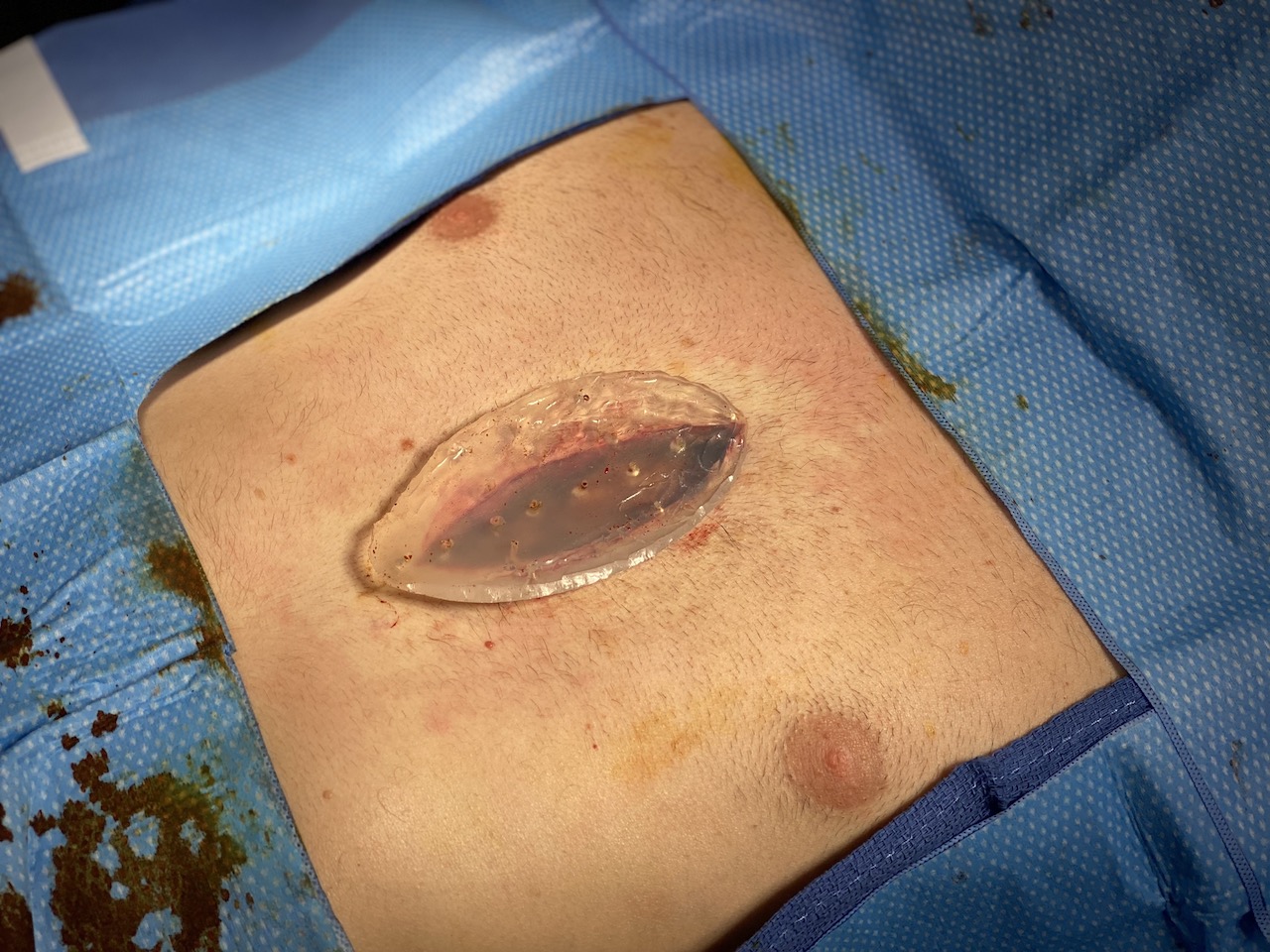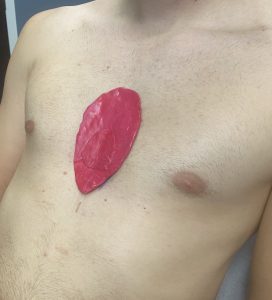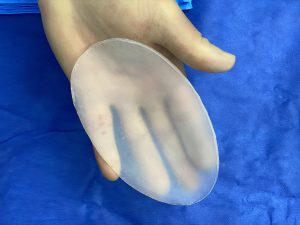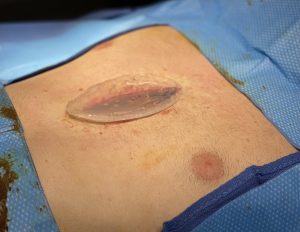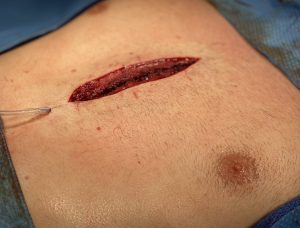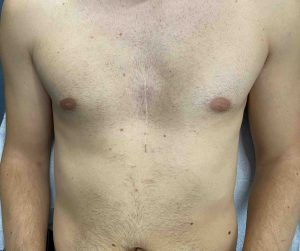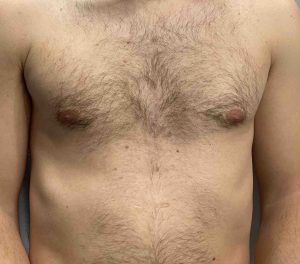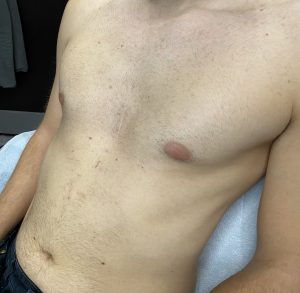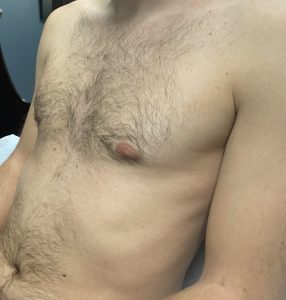Background: Pectus excavatum is a well known congenital chest deformity that when severe enough justifies surgical correction. The historic operation is the Ravitch procedure introduced back in the early 1950s. It has become improved and is now for some time been performed as the modified Ravitch procedure in which the sternum and surrounding structures are exposed by a midline incision, abnormal cartilages removed and the sternum reshaped and elevated into a more normal position. Holding the sternum out, often with a metal bar, while the rib cartilages grow back to it is key to the long term result.
Despite the best modified Ravitch surgery being performed a certain percentage of such treated patients with have some residual sternal depression that remains as an older adult. Such secondary sternal contouring is not done by further bone or cartilage reshaping. This requires augmentation on top of the sternal ‘valley’ which can usually only be done by an implant approach. Injection fat grafting is only effective for the smallest of sternal depressions and those that only have an inferior/xiphoid depression.
When designing a sternal implant a custom implant approach is needed. This can be done by the historic moulage technique or by using 3D CT scan to design the implant. Each sternal implant design approach as its advantages and disadvantages. The moulage technique requires some skill in working with the moldable polymer during the preoperative impression visit and, more importantly, an understanding that intraoperative modification of the implant will probably be needed. How much polymer to apply and how to shape it for the desired external contour result is a learned skill that is not infallible.
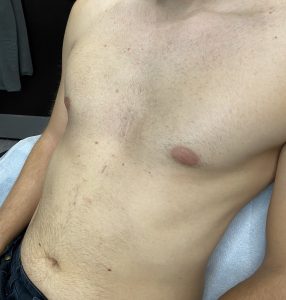


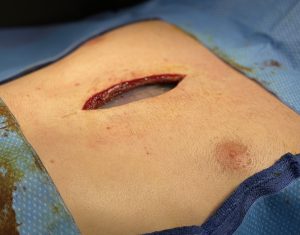
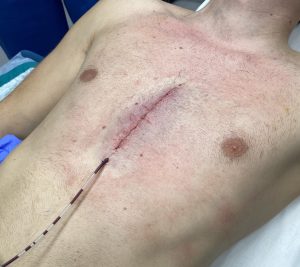
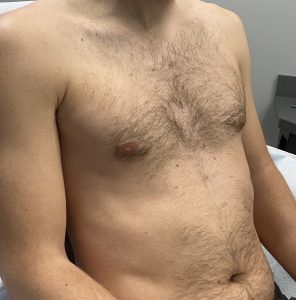
Case Highlights:
1) Early pectus excavatum surgery often provides good sternal-chest reshaping but residual sternal depressions are not uncommon.
2) A custom sternal implant can secondarily improve residual aesthetic sternal depressions. One method of implant fabrication is a moulage technique.
3) Even in custom sternal implant techniques intraoperative modification of some of the implant dimensions may be needed for optimal fit.
Dr. Barry Eppley
Indianapolis, Indiana

